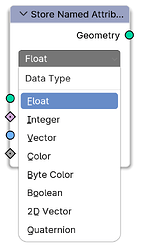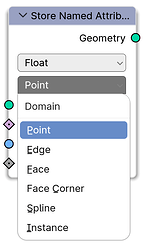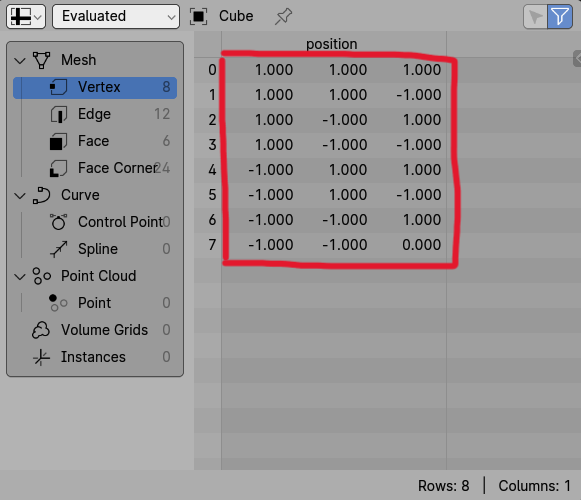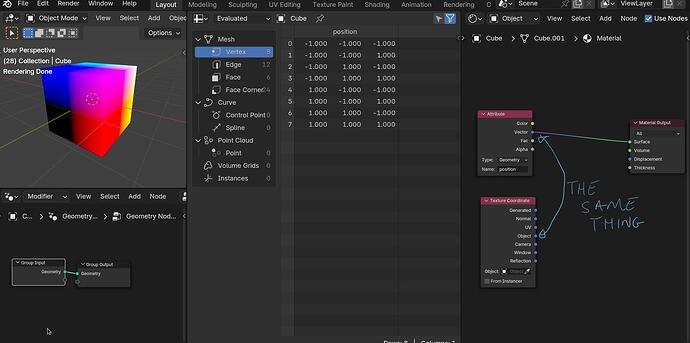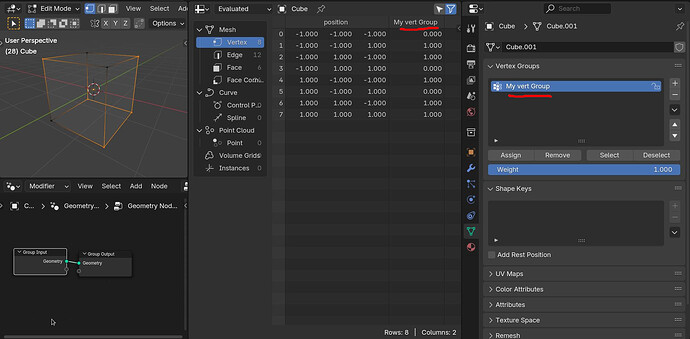Does Attribute mean Data / Information?
Question 1.
In this Youtube video, the Tutor pointed at the list of vertices’ positions and said that these pieces of coordinate information are attributes (more specifically, position attributes). Which led me to think, Attribute is data of something (in this case, of vertices): vertices’ positions, vertices’ normal, (…)
Question 2.
Would the Store Named Attribute node be a good way to show me what Attribute is?
So, according to the node, Attribute can be one of those Data Types like Scalars / Floats, Integers, Vectors, (…)
And those Data Types can be on Domains like Points, Edges, (…)
Right? Is it that simple?
Question 3.
Also, am I correct for thinking that Field is just a special case of Attribute?
A Field means a set of unique data assigned to each corresponding vertex, and Attribute just means general data (of vertices)?
Thank you!
Edit.
I found this answer on StackExchange, which says:
“Every point referenced in an object has an attribute, whether that is vertexes or points generated using a point distribute node. An attribute stores a bit of information of every one of these points. This could be a points scale, location or rotation. It could also be a user generated value such as a vertex group. Think of them as variables for every point in an object.”
Is this a good enough explanation? Is it accurate?
If it is, then it seems that the Attribute’s data listed in the Store Named Attribute such as “Scalars, Vectors, Integers, (…)” don’t match with what this person claims the type of Attribute’s data to be, which are "a point’s scale, location or rotation".
So, what are Attributes? “Scalars, Vectors, Integers, (…)”, or “a point’s scale, location or rotation”?
And if you are gonna answer “a point’s scale, location or rotation”, then why does the node Store Named Attribute says that the Attribute data is “Scalars, Vectors, Integers, (…)”?
